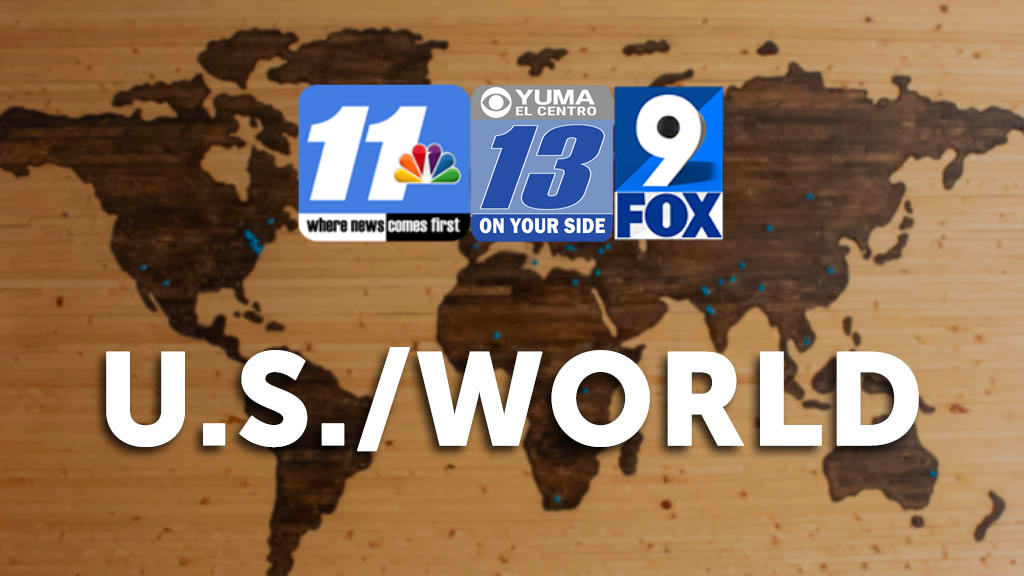Name etched in gold, King Charles’ school remembers him

By DANICA KIRKA
Associated Press
LONDON (AP) — King Charles III hasn’t even been crowned yet, but his name is already etched on the walls of Hill House School in London.
A wooden slab just inside the front door records Nov. 7, 1956, as the day the future king enrolled at Hill House, alongside other notable dates in the school’s 72-year history. There is a photograph of staff welcoming the then Prince Charles on his first day of school, and another of the 7-year-old boy getting into a Ford Zephyr with his bodyguard for the short trip back to Buckingham Palace.
To say Hill House is proud of its royal connection as Charles prepares for the coronation ceremony on May 6 would be an understatement.
“It’s just so fun to think the king went to our school,” said 11-year-old Lola Stewart. “Like, he’s worn our uniform. He’s probably been in this room. It’s just very exciting knowing that.”
Charles, the first U.K. monarch to be educated outside the palace walls, began his school career at Hill House, although he spent less than a year there before moving on to Cheam, an elite boarding school in the countryside west of London. Hill House, a family-run primary school in London’s tony Knightsbridge neighborhood is just a stone’s throw from the luxury department store Harrods and a short drive from Buckingham Palace.
But the future king was treated like anyone else, wearing the school uniform with a burnished gold jumper and walking through the streets to the nearby sports field without a bodyguard, though the headmaster’s wife was nearby.
Blessed with anonymity, Charles flourished, said Richard Townend, the son of the school’s founder who attended Hill House at the same time, though he was a few years older. The school focused — and still does — on giving students a broad range of experiences in sport, art, music and drama, alongside more academic pursuits.
Queen Elizabeth II and her husband, the Duke of Edinburgh, made a “leap of faith” when they enrolled Charles at Hill House because until then royal children had been educated by tutors, Townend said.
“My father was summoned to tea with the queen in Buckingham Palace. So, of course, he went and met with the queen and she grilled him as I understand it,” he said. “And at the end she said, ‘I think this is the right school for Charles to go to.’ It was a simple as that.”
But why Hill House?
“I think it was just the general wackiness of the place,” said Townend, whose family still operates the school, which costs up to 19,800 pounds ($24,575) a year.
The main school, housed in a three-story red brick building, is something of a living monument to the traditions of English private schools — Harry Potter without robes and broomsticks.
The walls are plastered with huge wooden plaques engraved with the names of head boys and girls and winners of contests. Old wooden skis and a racing oar frame the door to the music room. An Olympic flag hangs in the entryway, a souvenir of Townend’s father’s work on the 1948 London Games.
All pupils learn to swim. Music and art are stressed. French lessons begin in the first year of school, known as reception.
Townend’s father — remembered throughout the school as Col. Townend — founded Hill House in 1951 to provide an English education to the children of London’s burgeoning international community. After serving in the army during World War II, he believed that bringing children from many countries together at a young age was the path to peace, Townend said.
“This was his great passion,” he said. “He wanted to have this international school in which all the children would mix with each other and understand that though children are different, they are all basically the same, they’re all similar, and in this way build a more peaceful world.”
But it is also an unapologetically English school.
When the school choir, which includes children from Azerbaijan, Japan and Finland as well as Britain, was asked to sing the patriotic hymn “Jerusalem,” the kids belted it out. They didn’t need a sheet with the words.
“And did those feet in ancient times Walk upon England’s mountains green And was the holy lamb of God On England’s pleasant pastures seen,’’ they sang with gusto.
Townend himself looked horrified when asked if the U.K., a multicultural, multiethnic nation of 67 million, still needs a monarchy in the 21st century.
“Absolutely,’’ he said. “Can you imagine if we had a president like you had in America recently or in some of the other countries? No. You need a figurehead who is above politics, who is a focus for all sorts of enthusiasms.”
The kids, too, are anxiously awaiting the coronation — particularly the big moment when the crown is placed on Charles’ head.
“I’m really looking forward to seeing everyone all together — all the country celebrating and watching it or going to see it … and seeing the country unify because of such an important event,” said James Harris, 13. “It’s a really important symbol of our country.’’
___
Follow AP’s coverage of King Charles III at https://apnews.com/hub/king-charles-iii